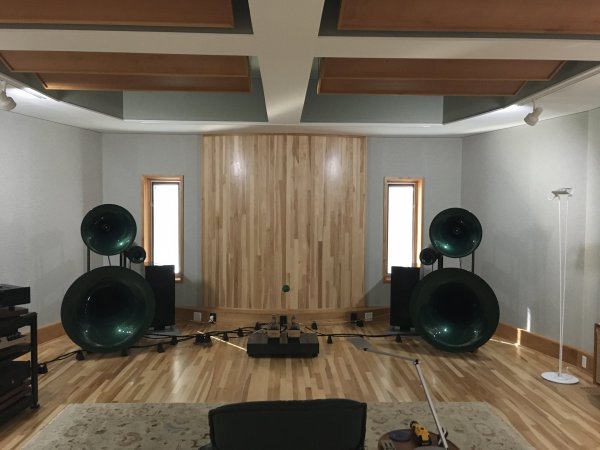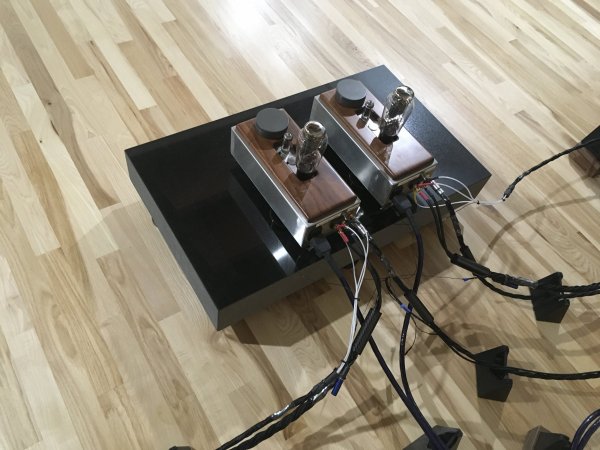Hi guys,
Getting back to midget amps and 1000 watt subs:
I stumbled on this thread after I had posted a reply on the “SET amp owners thread.”
https://www.whatsbestforum.com/threads/set-amp-owners-thread.27070/page-76#post-679680
and
https://www.whatsbestforum.com/threads/set-amp-owners-thread.27070/page-31#post-573521
This thread is perhaps even more appropriate, so I am repeating it here with a few changes and additions:


I have changed my (4) Avantgarde SUB 225 subwoofers to (2) REL 212SX subs. The change is truly phenomenal!
I have had many issues with the AG subs:
I had to recone most of the (8) drivers!
There was a huge thump when I turned them on or off (which, because of this, was seldom).
There was a background hum that additional grounding did not resolve.
They were SLOW relative to the horns.
Even when turned down so that they did not affect the midrange, they still muddied up the sound of the horns.
Despite all this, I lived with them for 20 years because I did not find anything to replace them that I thought would be better, or that I could afford, or that fit in my space, or that worked with my amps, etc.
I stumbled on a thread in a blog I seldom read:
https://forums.stevehoffman.tv/threads/avantgarde-trio-set-up-revisited-question.729213/
I contacted the thread starter in England, and one thing led to another.
I ordered a pair of (the newest) REL 212SX, and a pair of SR subwoofer cables designed for the RELs.
https://rel.net/shop/powered-subwoofers/serie-s/212-sx/
https://www.synergisticresearch.com/cables/atmosphere/subwoofer/atmosphere-relspec-subwoofer/
The two RELs are each powered by 1000W amplifiers. That makes a total of about 2008+ watts!! Obviously, most of it is unused.
The RELs connect to the high-level amp speaker terminals just as the AV subs did. This was a critical requirement for all the subs that I had considered in the past. I did not want to change the sound of the horns, and I did not want to add more cables or electronics.
I have not made a direct comparison of the REL high-level cables to the SR cables, but I trust that the SR cables are making a big contribution here, especially considering that I have SR cables throughout my system.
I bought my Wavelength Mercury Ag amps when I bought my Trios. I still love them 20 years later. The Wavelength Mercury was rated at 4W @ using AVVT20SL tubes. Since these tubes are NLA, I switched to the Emission Labs 20B. This turned out to be a big improvement as the AVVT was more tubey sounding and the 20B is very dynamic and realistic in my system. I suspect that they also boosted the 4W output a bit.
I wrote to REL:
If: The amps are 4W+ full power and 15-45KHz -3dB
And: The Trios are 109 Db+ efficient, and the amps are still VERY quiet.
And: The horns are rated for 3W-200W input.
And: The horns and the Avantgarde subs will play really loud now without noticeable distortion, and I avoid driving them any harder.
And: The amplifier designer/manufacturer says there should be no problem here.
And: My friend has a very similar system with the same speakers and two REL 212SE
Then: Is there any problem with driving two REL 212SX subs to the same volume levels that I currently have?
Every person I spoke with at REL thought this should be fine, except for one influential individual who stated they would not work with my amps but refused to talk with me. I spent a frustrating week reading and making phone calls.
I held my breath and ordered the subs anyway!
After a couple of break-in stumbles, the RELs are FANTASTIC!
There is ABSOLUTELY NOTHING WRONG with my Wavelength amps driving these!
Relative to the AG subs:
They are much easier place and tune.
They integrate with the horns seamlessly.
They are fast, dynamic, powerful and natural sounding.
There is a new quietness around the musical notes coming from the horns that has never been there before.
The soundstage is larger, but naturally recorded voices and instruments are not.
Likely much more that I have yet to discover!
I am a happy camper!
Best,
Don
















